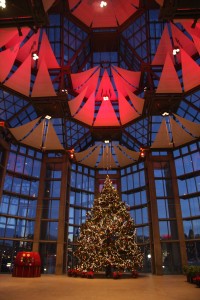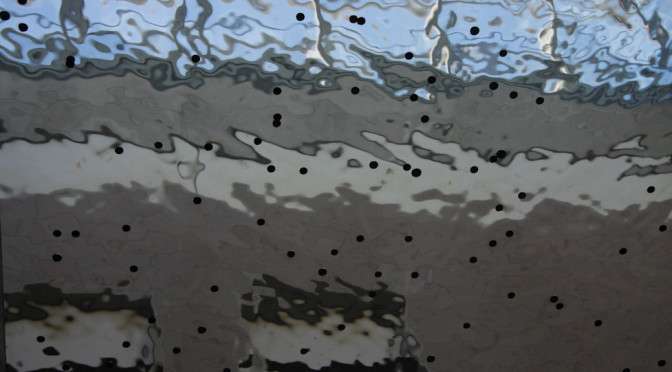 I remember when my eldest was about five and we headed to the National Gallery in Ottawa for some regular cultural exploration to keep me from going bonkers. D fell asleep in the van and I carried him into the building. Once inside he stirred and, looking up into the sweeping glass ceilings filled with cerulean blue skies, exclaimed: “It’s like a dream!”. And I couldn’t agree with him more.
I remember when my eldest was about five and we headed to the National Gallery in Ottawa for some regular cultural exploration to keep me from going bonkers. D fell asleep in the van and I carried him into the building. Once inside he stirred and, looking up into the sweeping glass ceilings filled with cerulean blue skies, exclaimed: “It’s like a dream!”. And I couldn’t agree with him more.
I’ve always been a huge fan of Moshe Safdie’s National Gallery building that dwarfs the modest collection it houses*. It catches the light like a perfectly cut jewel, creating a kaleidoscope of changing shadow patterns and a bottomless longing in me to shoot frame after frame. When I put on my builders’ hat I am astonished by the complexity of the windows alone that must have been a nightmare to seal and shade correctly, not to mention clean. But, luckily, my only job is to admire its beauty; maintenance and energy efficiency are somebody else’s problem.
And so it was akin to seeing a play within a play to check out “Global Citizen: The Architecture of Moshe Safdie”, which is on exhibit at the Gallery through January 9th, 2011.
I am still fascinated by Habitat ’67. The images are ingrained in my imagination and I still believe that it is one of the sexiest addresses one could possess, spaces filled with the most erudite and creative. I was surprised to find numerous iterations of the Habitat model destined for other locations that failed to come to fruition. How disappointing it must be to invest so much precious energy and resources into projects that go nowhere! The scale and scope of his projects seemed to grow with time, often stretching far beyond buildings of human scale and into futuristic, jaw-dropping colossi halfway around the world. Maybe I am just small and provincial but the projects that jumpstarted my soul were those that kept to a single theme and repeated shapes and forms to a harmonious consensus in a scale that I could relate to.
The hand-drawn sketches and meticulously-crafted architectural models are works of art in themselves and it was fascinating to read the project notes from Habitat (and later projects) that provide prognostications into the future need and capacity for creating suitable housing and living communities that meet our various needs as human beings. It is a complex challenge that we continue to face nearly fifty years later.
*While it’s true that I’m not a huge fan of the permanent collection (compared to, say, The Met or The Louvre) Husband and I thoroughly enjoyed the exhibit “It Is What It is. Recent Acquisitions of New Canadian Art” and plan to bring the four squids back for a gander. It is diverse not to mention (at times) strange, funny, tender, unsettling, complex and awe-inspiring for the art, craft and underlying commentary of its pieces.
